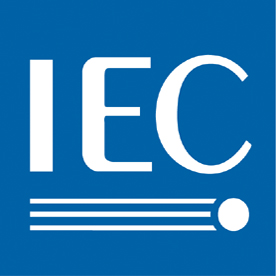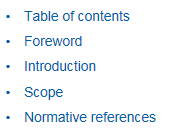IEC TR 61000-3-13:2008
Electromagnetic compatibility (EMC) - Part 3-13: Limits - Assessment of emission limits for the connection of unbalanced installations to MV, HV and EHV power systems
Abstract
This part of IEC 61000 provides guidance on principles which can be used as the basis for determining the requirements for the connection of unbalanced installations (i.e. three-phase installations causing voltage unbalance) to MV, HV and EHV public power systems (LV installations are covered in other IEC documents). For the purposes of this report, an unbalanced installation means a three-phase installation (which may be a load or a generator) that produces voltage unbalance on the system. The connection of single-phase installations is not specifically addressed, as the connection of such installations is under the control of the system operator or owner. The general principles however may be adapted when considering the connection of single-phase installations. The primary objective is to provide guidance to system operators or owners on engineering practices, which will facilitate the provision of adequate service quality for all connected customers. In addressing installations, this document is not intended to replace equipment standards for emission limits. The report addresses the allocation of the capacity of the system to absorb disturbances. It does not address how to mitigate disturbances, nor does it address how the capacity of the system can be increased. Since the guidelines outlined in this report are necessarily based on certain simplifying assumptions, there is no guarantee that this approach will always provide the optimum solution for all unbalanced load situations. The recommended approach should be used with flexibility and judgment as far as engineering is concerned, when applying the given assessment procedures in full or in part. The system operator or owner is responsible for specifying requirements for the connection of installations which may cause unbalance on the system. The disturbing installation is to be understood as the complete customer's installation (i.e. including balanced and unbalanced parts). Problems related to unbalance fall into two basic categories.
- Unbalanced installations that draw negative-sequence currents which produce negative-sequence voltages on the supply system. Examples of such installations include arc furnaces and traction loads (typically connected to the public network at HV), and three phase installations where the individual loads are not balanced (typically connected at MV and LV). Negative-sequence voltage superimposed onto the terminal voltage of rotating machines can produce additional heat losses. Negative-sequence voltage can also cause non-characteristic harmonics (typically positive-sequence 3rd harmonic) to be produced by power converters.
- Unbalanced installations connected line-to-neutral can also draw zero-sequence currents which can be transferred or not into the supply system depending on the type of connection of the coupling transformer. The flow of zero-sequence currents in a grounded neutral system causes zero-sequence unbalance affecting line-to-neutral voltages. This is not normally controlled by setting emission limits, but rather by system design and maintenance. Ungrounded-neutral systems and phase-to-phase connected installations are not, however, affected by this kind of voltage unbalance. This report gives guidance only for the coordination of the negative-sequence type of voltage unbalance between different voltage levels in order to meet the compatibility levels at the point of utilisation. No compatibility levels are defined for zero-sequence type of voltage unbalance as this is often considered as being less relevant to the coordination of unbalance levels compared to the first type of voltage unbalance. However, for situations where a non-zero impedance exists between neutral and earth with the system still being effectively grounded (i.e., where the ratio between zero-sequence, X0 and positive sequence reactance X1 is 0 < X0/X1 = 3), this type of voltage unbalance can be of concern especially when the type of connection of the coupling transformer allows zero-sequence path to flow from MV to LV and vice-versa. This Technical Report has the status of a basic EMC publication in accordance with IEC Guide 107. The contents of the corrigendum of April 2010 have been included in this copy.
Additional information
| Publication type | Technical Report |
|---|---|
| Publication date | 2008-02-22 |
| Edition | 1.0 |
| Available language(s) | English |
| TC/SC | TC 77/SC 77A - EMC - Low frequency phenomenarss |
| ICS | 33.100.10 - Emission |
| Stability date | 2027 |
| Pages | 41 |
| File size | 1262 KB |
The following test report forms are related:
Share your publications
Learn how to share your publications with your colleagues, using networking options.
Payment information
Our prices are in Swiss francs (CHF). We accept all major credit cards (American Express, Mastercard and Visa, JCB and CUP), PayPal and bank transfers as form of payment.
Keep in touch
Keep up to date with new publication releases and announcements with our free IEC Just Published email newsletter.
Contact customer services
Please send your enquiry by email or call us on +41 22 919 02 11 between 09:00 – 16:00 CET Monday to Friday.

